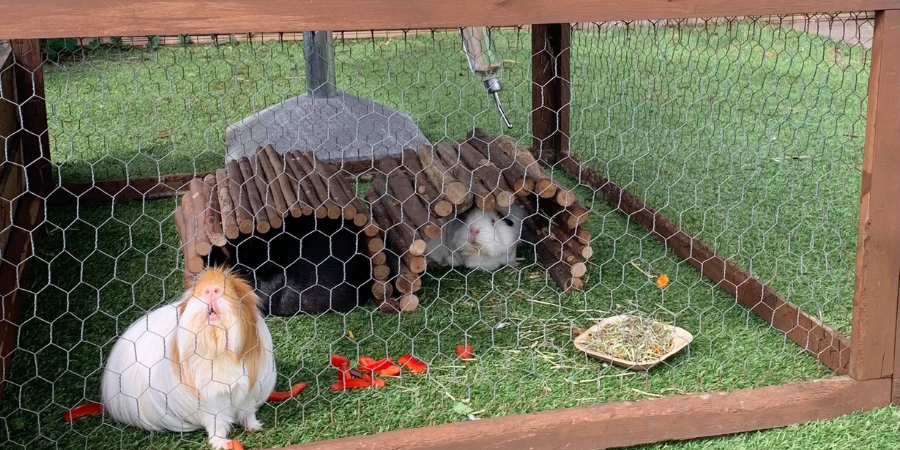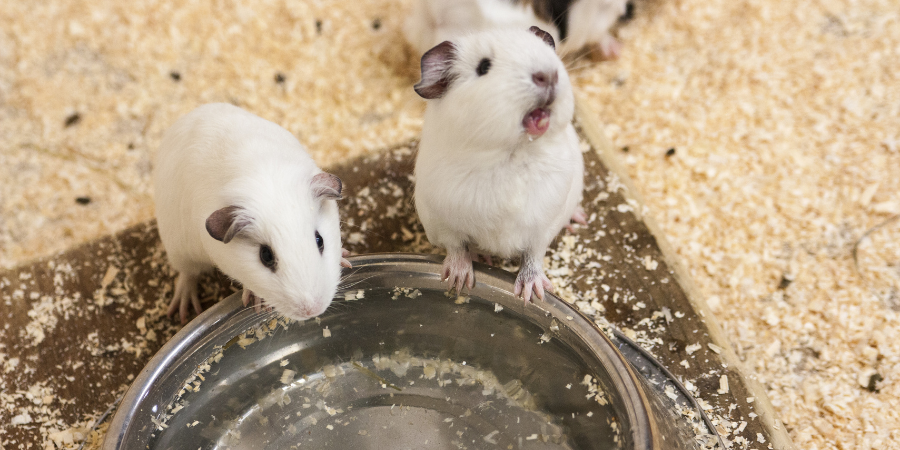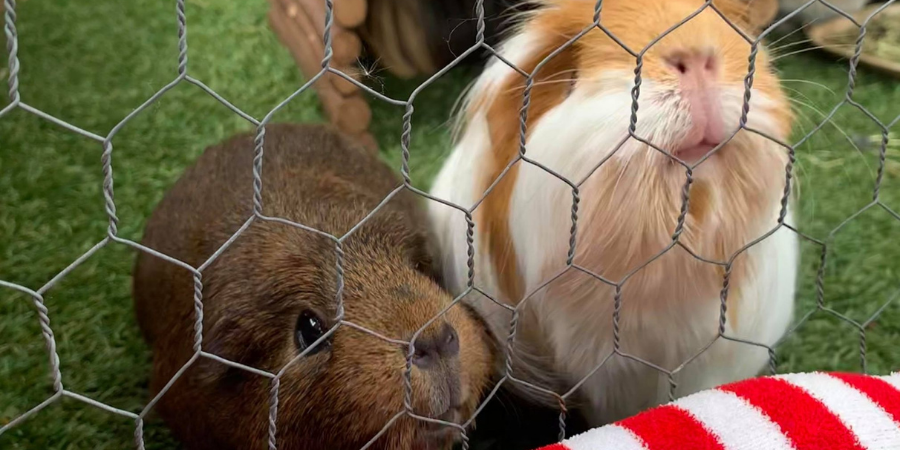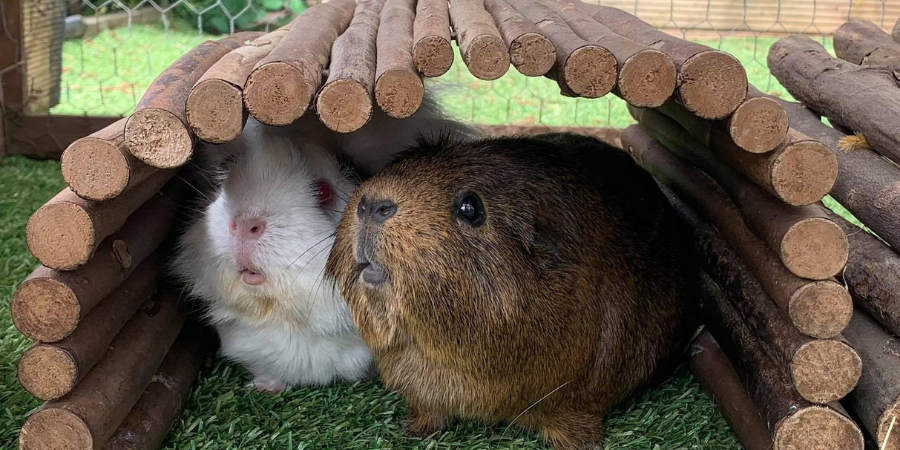We’ve got plenty of simple tips up our sleeve to help prevent overheating, so your pets can be comfortable this summer. Here’s our dos and don’ts when keeping your guinea pigs cool!
Do know the signs of heatstroke in guinea pigs
Heatstroke can be fatal for small pets – but would you know what symptoms to look out for? Knowing the signs is crucial to acting quickly, so we’ve put together a list of the most common symptoms of heatstroke:
- Taking short, quick breaths
- Drooling
- Struggling to breathe
- Acting very sleepy or lethargic
- Collapsing/ falling unconscious
- Having fits
If you notice any of these symptoms, give first aid and call your vet immediately – but don’t forget, prevention is always better than cure!
Don’t place them in direct sunlight
Never keep your small pets’ enclosure sitting in direct sunlight; they can quickly overheat, so think carefully about where you place their home.
Keeping them in shaded areas, closing the curtains if indoors and using a sun umbrella, are all great ways of keeping the direct sunlight away.
Keep an eye on the direction of the sun – you may need to follow it as the day goes on!

Do keep them hydrated
It might sound obvious, but one of the most vital ways to avoid overheating is to keep your guinea pigs hydrated. Make sure they always have access to fresh, clean water and consider providing a few different bowls and bottles so they can choose where they want to drink.
There’s also a wide variety of yummy fruit and vegetables that you can provide, which will help your guinea pigs enjoy extra water. Just make sure you introduce any new foods slowly so you don’t give them an upset tummy. You can also drench their greens in water before you feed. Examples of safe, hydrating treats are:
- Pears
- Apple (avoid the pips)
- Celery
Only feed these treats in moderation – especially any fruits – as these are high in sugar and should be fed very sparingly. Remember to check your pets are the ideal weight before feeding any additional treats.

Hot weather can also cause the water in your small pets’ bottles or bowls to go warm, so think about changing their water frequently throughout the day to ensure it stays lovely and cool.
Don’t be tempted to give them a cool bath
A refreshing dip in a cool pool may sound appealing to us as the sun blazes down, but your guinea pigs don’t feel the same way. Never place your guinea pigs directly into cold water – not only is bathing very stressful for them, it can also cause their small, sensitive bodies to go into shock!
Do make your own DIY frozen ice pack!
Making your own ice pack for your guinea pigs can be a great way to help them keep cool – and it’s easy to make on a budget! Here’s a simple guide to making your own:
- Take an empty bottle of water, fill it up and place it in the freezer until the water has turned to ice
- Once it’s good to go, wrap the frozen bottle in a towel – or even a sock!
- Place it just outside of their cage, so your small pets can lie against it should they feel too warm.
Don’t let your guinea pigs get too close to the frozen bottle – they have very sensitive skin and can get ‘ice burns’ if they touch the ice directly.

Don’t let their fur get too long
The heat is harsh on all small pets, but long-haired breeds of guinea pigs are in particular need of some extra TLC to help them beat the heat. Here are our tips on grooming your guinea pig.
Grooming checklist
What you’ll need:
- Small pet brush
- Small pet comb
- A grooming table or a safe place to let them sit
- An old towel for them to rest on
- A rubbish bin to collect their unwanted hair!
Give them a brush
Many guinea pigs will enjoy a regular brush to help keep their coat in order, especially if they’re moulting. You may find that they will start to shed their winter coat, ready for the summer, which means that they are likely to end up with clumps of old fur in their coat. Brushing them daily to remove excess fur, is important when helping keep them cool.
Creating a safe and secure space to groom your guinea pigs, such as sitting on the floor in their exercise area, will help avoid accidents – and remember to never leave them unattended if they’re not in their usual enclosure!
You can use a brush to remove any loose fur and the comb to gently tease out any tangles.
Don’t forget that you need to check your guinea pigs’ bottoms every day to check they’re clean and reduce the risk of flystrike.
Do be mindful of heat-absorbing hidey houses
Providing plenty of access to shaded areas is crucial to keeping your pets cool; however, do be mindful about the type of hidey house you use. The inside of a plastic hidey can warm very quickly. Instead, try giving them wooden houses, tunnels, and hay to burrow in – or even make your own with a cardboard box!

You can also try using ceramic or stone tiles. Safely place them on the floor under a box in their enclosure to provide a cool, shaded spot. Sample tiles from your local DIY store work really well and come in a variety of sizes.
The tile will stay cool throughout the day, and your guinea pigs can jump on and off as freely as they please! Just make sure the tile is out of the sun to stop them getting dangerously hot.
